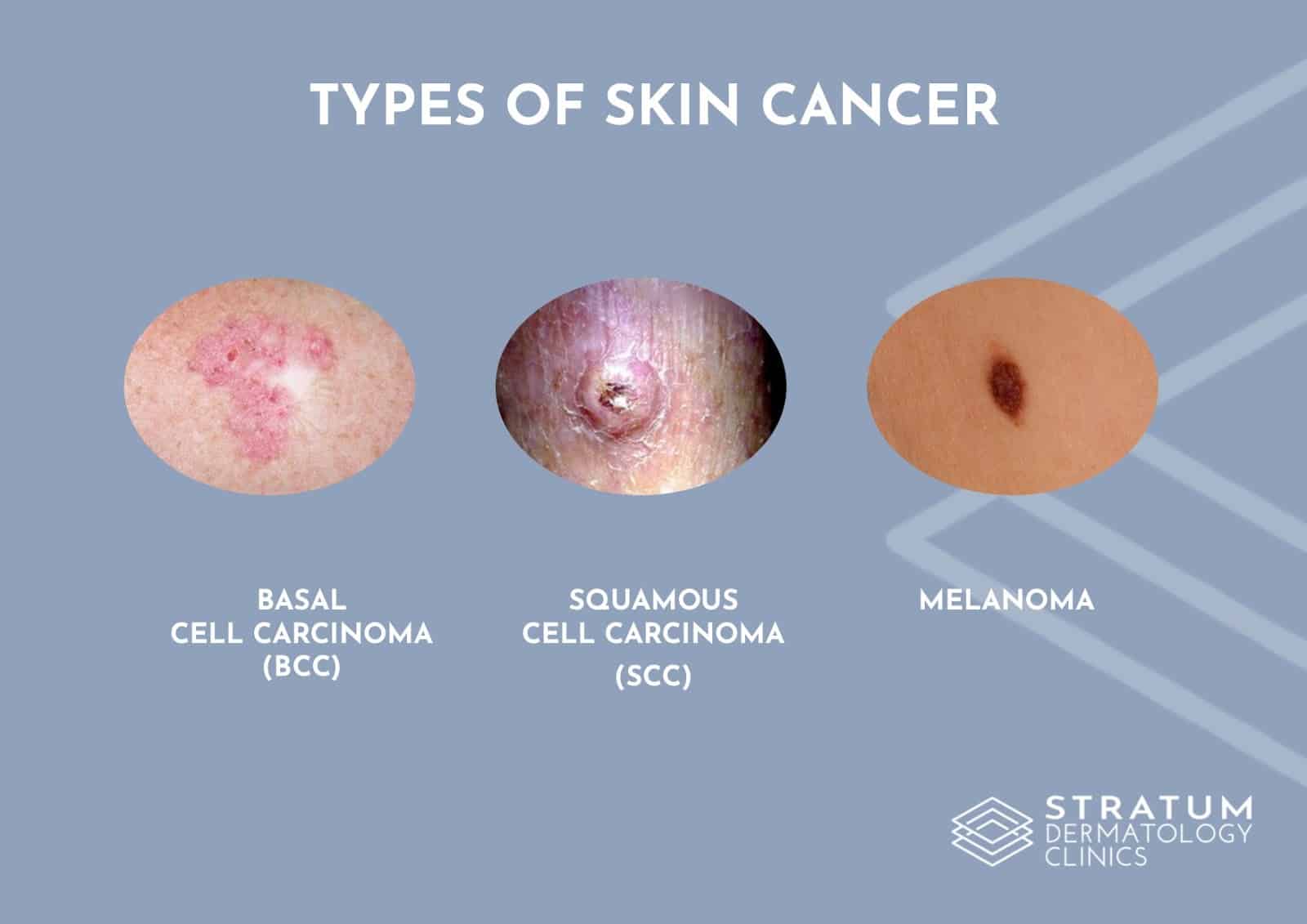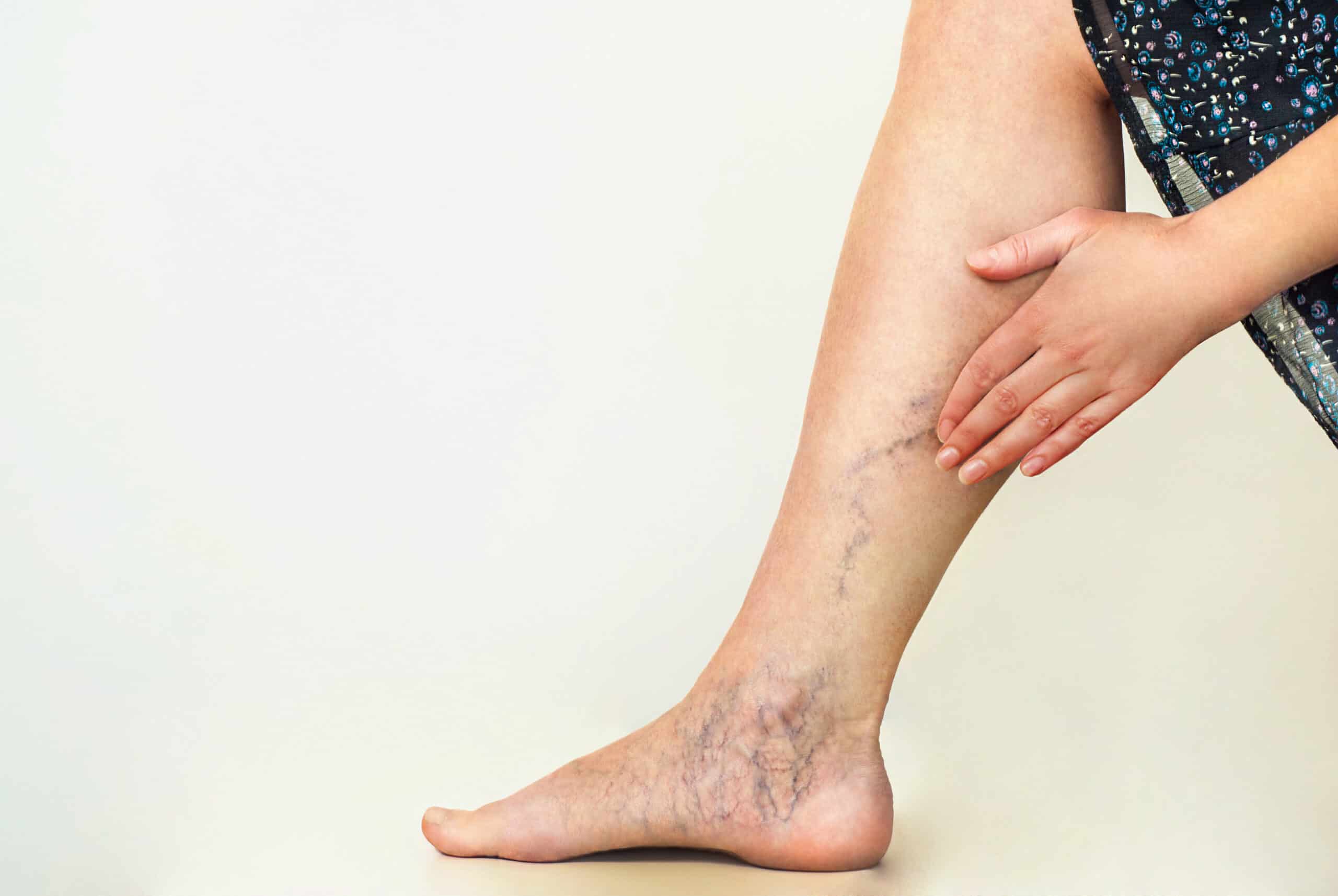WHAT ARE THE COMMON TYPES OF SKIN CANCER?
There are three main types of skin cancer, basal cell carcinoma (BCC), squamous cell carcinoma (SCC) and melanoma. The first two are both known as non-melanoma skin cancer and are the most common varieties.
Non-melanoma skin cancer refers to a group of cancers that slowly develop in the upper layers of the skin and are the most common forms. These are identified by a lump or discoloured patch on the skin. Melanoma is less common and can be more serious and aggressive as it can spread to other organs in the body. The most common sign of melanoma skin cancer is changing moles.

BASAL CELL CARCINOMA (BCC)
Basal cell carcinoma, or BCC, is a cancer of the basal cells at the bottom of the epidermis.
THE BASAL LAYER
The basal layer is the innermost layer of the epidermis. It contains small round cells called basal cells. These basal cells continually divide, and new cells constantly push older ones up toward the surface of the skin, where they are eventually shed. The basal cell layer is also known as the stratum germinativum due to the fact that it is constantly germinating (producing) new cells.
The basal cell layer contains cells called melanocytes. Melanocytes produce the skin colouring or pigment known as melanin. This helps protect the deeper layers of the skin from the harmful effects of the sun. Sun exposure causes melanocytes to increase production of melanin in order to protect the skin from damaging ultraviolet (UV) rays, producing a suntan. Melanoma develops when melanocytes undergo malignant transformation. Patches of melanin in the skin cause birthmarks, freckles and age spots.
A BCC is sometimes called a rodent ulcer and is very common. About 75% of all skin cancers in the UK are Basal Cell Carcinomas. Most BCCs are slow-growing and almost never spread to other parts of the body.
Nearly everyone with a BCC who has treatment is completely cured,but some BCCs are aggressive, and, if left to grow, may spread into the deeper layers of the skin and sometimes to the bones. A small number of BCCs may also come back in the same area of skin after treatment – this is known as a local recurrence.
Basal Cell Carcinomas are the most common type of skin cancer and mostly develop in areas of skin exposed to the sun such as the head, face, ears and neck.
Find out more Skin Cancer Treatments?
Here at Stratum Dermatology Clinics, we understand how skin conditions can negatively impact your life. We help hundreds of patients each month and our dermatology experts have a wealth of experience in the assessment, treatment and management of all types of skin cancers.

Find out more Skin Cancer Treatments?

SQUAMOUS CELL CARCINOMA (SCC)
Squamous cell carcinoma, or SCC, is a cancer of the cells in the outer layer of the skin and is the second most common type of skin cancer in the UK. Fortunately, most people treated for SCC are completely cured.
Usually, SCCs develop slowly and they only spread to other parts of the body if they are left untreated for a long time. Sometimes, they can behave more aggressively and spread at an earlier stage.
WHAT IS A SQUAMOUS CELL?
One of three main types of cells in the top layer of the skin (the epidermis), squamous cells are flat cells located near the surface of the skin that shed continuously as new ones form.
A Squamous Cell Carcinoma occurs when DNA damage from exposure to ultraviolet (UV) radiation (from sources like the sun or tanning beds) or other damaging agents trigger abnormal changes in the squamous cells.
WHAT DOES AN SCC LOOK LIKE?
SCCs can appear as scaly red patches, rough, thickened or wart-like skin, open sores or raised growths with a central depression. At times, SCCs may crust over, itch or bleed. These lesions normally arise in sun-exposed areas of the body, but they can also occur in other areas of the body, including the genitals.
Most SCCs can be easily and successfully treated. But if allowed to grow, these lesions can become disfiguring, dangerous and even deadly. Untreated Squamous Cell Carcinomas can become invasive. They can grow into deeper layers of skin and spread to other parts of the body.
MALIGNANT MELANOMA
Malignant melanomas are less common, but very serious. They behave differently to Basal Cell Carcinomas or Squamous Cell Carcinomas. Malignant melanomas can grow quickly so need to be treated early.
Melanoma is a cancer that usually starts in the skin. It can start in a mole or even in normal-looking skin. A melanoma develops when cells called melanocytes grow and divide at a quicker rate than usual.
There are four main types of skin melanoma:
Superficial spreading melanoma
Nodular melanoma
Lentigo maligna melanoma
Acral lentiginous melanoma.
SYMPTOMS OF MELANOMA
About half of all melanomas start with a new, abnormal-looking mole in normal-looking skin. Other melanomas develop from a mole that you already have. It can be difficult to tell the difference between melanoma and a normal mole.
Diagnosis and treatment for all four types is similar.
Complications can arise if melanoma is not removed. The cells can grow deeper into the layers of the skin. If these cells reach the blood or lymphatic system, they can travel to other parts of the body, meaning it is vital to get your skin assessed by a doctor if you have any concerns.
Skin cancer is the most common form of cancer in the UK, with over 400 people being diagnosed every day. Melanoma skin cancer is on the rise, with incidence rates increasing by 45% in the UK in the last decade, despite the warnings of the dangerous effects of sun exposure. Early detection of all forms of skin cancer, through examination of skin and regular monitoring of moles, saves lives and if caught and treated early enough there is a 100% chance of survival. If you are worried about any lesion or mole, get in contact today.
AUTHOR

DR MARK HUDSON-PEACOCK
CONSULTANT DERMATOLOGIST
Qualifications: BSc(Hons), MBBCh, FRCP
GMC: 3241101
Dr Hudson-Peacock is the Director and Clinical Lead at the Canterbury Skin and Laser Clinic, also known as Stratum Clinics Canterbury. He was the Senior Consultant Dermatologist in the East Kent Hospitals University NHS Foundation Trust, a post he held from January 1996 until January 2014, when he left to focus his energy to bring a new medical treatment to the NHS. He is a general dermatologist with specialist interest in skin and laser surgery.




